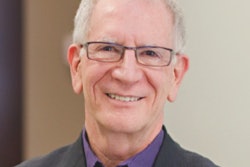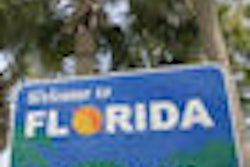
Can you seal over carious lesions? Is self-etch as strong as total? When should you yank a third molar?
When Jane Gillette, D.D.S., took over as dental director at an overwhelmed public health center in Montana, she found herself puzzling over such questions. And she decided that she -- and most other dentists -- often lack resources for answering them. "We either read a journal article or talk to our friends or mentors," says Dr. Gillette. But a single journal article or conversation might give a biased or out-of-date perspective.

Clinical guidelines established by professional groups can help. But as one recent study found, there are no guidelines for most dental procedures, and many of the existing guidelines are vague. On the other hand, with moaning patients lined up outside the door, Dr. Gillette had no time to wade through rivers of data.
"The current best evidence is constantly changing," says Richard Niederman, D.M.D., director of the Boston-based Forsyth Center for Evidence-Based Dentistry. Studying the dental literature a decade ago, Dr. Niederman found that more than one paper was being published in each dental specialty per day. "How can any individual keep up?"
Dr. Gillette, now in private practice, and Dr. Niederman have joined a movement to systematically analyze the research on key dental issues and digest it into practical terms. "We know that dentists try to implement the best clinical research," says Julie Frantsve-Hawley, R.D.H., Ph.D. director of the ADA Research Institute. "But it's hard."
The ADA held its third annual conference on evidence-based dentistry this month at its Chicago headquarters. The event featured training for 150 evidence-based dentistry "champions" from throughout the ranks of dentistry. The ADA hopes these evangelists will spread the word that dentists can -- and should -- be using new resources in their decision making, including a new section of the ADA's Web site (see sidebar).
“Dentists don't appreciate people telling them what to do.”
To some extent, the movement arises from dissatisfaction with the way continuing education is done. Dr. Niederman points out that no one supervises to make sure dentists are learning what they really need to learn. "We get stubborn and set in our ways as we get older," he says. "We take courses in what we already know or are interested in, rather than what we need to know."
The movement has its detractors. "Dentists don't appreciate people telling them what to do," says David Chambers, Ph.D., Ed.M., M.B.A., a professor of dental education at the University of the Pacific (UOP) School of Dentistry in San Francisco.
But the use of the term "evidence-based dentistry," at least, is spreading fast. Some insurance companies have already hopped on the train. Delta Dental of Wisconsin, for example, now offers an "Evidence-Based Integrated Care Plan."
|
Resources for evidence-based dentistry ADA Web site Centre for Evidence-Based Dentistry Cochrane Collaboration Database of Abstracts of Reviews of Effects (DARE) Evidence-Based Dentistry Evidentista Journal of Evidence-Based Dental Practice Turning Research Into Practice (TRIP) Database |
A medical model
So what exactly does evidence-based dentistry mean? The evidence-based movement began in medicine at least 20 years ago, as medical doctors, too, found themselves struggling to make sense of a mountain of data. The solution that evidence-based advocates found was to comb the literature, published and unpublished, and review it in a systematic way that would reduce bias.
"For the past 100 years, we have depended on the traditional literature review," says Jim Bader, D.D.S., M.P.H., a research professor of operative dentistry at the University of North Carolina at Chapel Hill. "The review is done by an expert, and the expert may or may not have a bias."
By contrast, a systematic review sets precise protocols that explain the criteria used to compare difference sorts of research. For example, the Journal of Evidence-Based Dental Practice assigns a rank to studies included in its reviews. "1a" is a "systematic review of RCTs" (randomized clinical trials). "1b" is an "individual RCT (with narrow confidence intervals)." At the bottom of the hierarchy is 5, an "expert opinion without explicit critical appraisal, or based on physiology, bench research or 'proof of principle' study."
The journal promises to "go beyond reporting of key findings" and "clearly describe the article's relevance to clinical practice."
Such approaches are already influencing other dental journals. For example, the Journal of the American Dental Association in March featured a systematic review of studies on the use of pit and fissure sealants. The article described in detail the methods used to scrutinize each study, and offered more detail on these criteria in online appendices. The article concluded that the sealants should be used on noncavitated caries and offered pages of detailed instructions for identifying and sealing lesions.
Yet so far no organized body sets standards for evidence-based research; the editors of each journal come up with their own. And anyone who wants to attach the term to their work is free to do so.
What does it mean?
That has already led to fears that the term is being thrown around too loosely. "Some people are afraid insurance companies will get a hold of it and make dentists do things they don't want to do," says UOP's Dr. Chambers. "It happens in hospitals all the time."
In January the ADA sent a letter to the America's Health Insurance Plans, an association of insurance companies, challenging the way it uses the term "evidence-based dentistry." Guidelines based on insurance claims data should not be called evidence-based, the ADA argued, because they can't be scientifically reproduced.
So what's the ADA definition? "An approach to oral health care that requires the judicious integration of systematic assessments of clinically relevant scientific evidence, relating to the patient's oral and medical condition and history, with the dentist's clinical expertise and the patient's treatment need and preferences."
But Dr. Chambers, for one, isn't convinced that the ADA has cleared up the confusion. Evidence-based dentistry "has no commonly accepted definition," he says. "If it means strengthening the scientific foundations for dentistry, that is nothing that deserves a new name. If it means researching how dentists can combine science, their own experience, and patient values -- as stated in the ADA definition -- there are virtually no studies showing how this is managed."
What works in medicine may not work in dentistry, he argues. To begin with, many dental procedures have not been thoroughly researched. As a consequence, many systematic reviewers are forced to conclude simply that there isn't enough evidence to make a recommendation.
The lack of evidence stems partly from a lack of money; dentistry is often at the end of the line when research grants are being doled out. It's also because so much of dentistry is surgical. Surgery doesn't lend itself as easily as drug therapy to the placebo-controlled, randomized clinical trials that evidence-based advocates hold up as their gold standard. What kind of placebo can you use for an implant?
The ADA's Dr. Frantsve-Hawley doesn't dispute these problems. She just doesn't think they're a good enough reason to stop trying. "I agree the funding is not good," she says. "But dentistry has been around for a while, and it's good to look at the science." Even if a systematic review concludes that the evidence isn't sufficient, that helps researchers prioritize their future efforts, she says.
As for working dentists: "We're providing the tools that can be used in different settings," she says. "We hope people will use them."
In her community health center, Dr. Gillette combed the evidence-based literature to figure out how she could most efficiently prevent caries among the patients filing through the door. After looking at reviews by the Cochrane Collaboration, the Journal of Evidence-Based Dental Practice, and the ADA guidelines, she settled on fluoride varnish.
Did it work? Dr. Gillette thinks so. But she'll never know for sure; she couldn't afford a randomized, controlled trial.



















